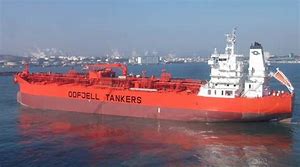Mark Cuban owns the NBA’s Dallas Mavericks. With a reputation as being a maverick himself, the outspoken basketball team owner just cost himself $600,000 by being honest about something that the NBA (and other sports, for that matter) doesn’t want to admit.
While being interviewed recently by NBA legend Julius Erving, Mark Cuban confessed that, for a struggling team like this year’s Dallas Mavericks, one of the surest ways to improve your team quickly is to finish at or near the bottom of the league standings to grab a “sure-fire” draft prospect coming out of college.
For his honesty, Adam Silver (NBA Commissioner and chief censor of free speech) meted out a whopping $600K fine to Cuban for his remarks. In a multi-billion dollar industry, it isn’t appropriate to tell the Mavericks’ (and the NBA’s) paying customers that their team should try to lose more games today in order to have an improved chance of becoming more competitive next year.
Mark Cuban has apologized for his comments and accepted a hefty penalty for telling the truth. The NBA already has many skeptics who think that the league’s referees can quietly influence the outcome of games during the playoffs to keep more of the top stars on the court to enhance television ratings and revenue for the league.
Despite their detractors, Vince McMahon’s World Wrestling Entertainment (WWE) makes no bones about pre-arranged outcomes in wrestling match-ups. The NBA, though, cannot afford to confirm the suspicions that teams falling out of playoff contention are motivated NOT to win games after the All-Star break.
Just like many things in life, people (in this case, professional sports teams) gravitate toward the area of biggest rewards. This “tanking” strategy is an economic decision whereby non-playoff teams are responding to their best available reward (a better draft pick). To cure the problem, the NBA (and the NFL, etc.) should eliminate any economic incentive which encourages teams to lose the most games.
Let’s say that the NBA splits its season into two parts. At the All-Star break, each of the top four teams from the Eastern and Western Conference would clinch a berth in the NBA’s eight-team conference playoffs. The seeding for those four teams in the playoffs, though, will be determined by the total number of games each team wins for the entire season as the next four playoff seeds will come after conclusion of the second half of the year.
Playoff seeds #5, 6, 7, and 8 will be awarded to the four teams which win the most games during the second half of the season following the NBA’s All-Star break. In the event that one (or more) of the first half winners also win one of the second half spots, the teams with the best overall record in each conference would be selected to round-out the playoff groupings. Playoff seeding for all eight teams would be determined by the team’s overall season record.
The emphasis would keep teams (and their fans) focused on winning. Both halves of the NBA season would become more meaningful and suspenseful. The first half winners remain motivated by the chance to earn the overall home court advantage during the playoffs. The second half playoff teams would have a chance to bring their fans a playoff berth with a fantastic finish. This also guarantees that the league’s hottest teams at the end of the year would earn a spot in the NBA playoffs. Finally, the teams which have played consistently well for the entire year would also have a glimmer of hope to slide into the playoffs based on their overall season record (should any of the first half winners earn another top-four finish in the second half of the season).
What about the other 14 teams who don’t make the playoffs? They go into the NBA draft lottery for the next season. But this time, each team gets only ONE BALL in the hopper (pure chance) so that no team is given an artificial advantage for losing the most games during the regular season.
The result? Basketball fans get treated to a meaningful first half of the season. It would improve early season interest and television ratings. Following the All-Star game, every team then gets a chance to sprint to the finish line to grab the remaining playoff spots or a chance to grab home court advantage.
For the struggling teams, each team is treated the same during the NBA draft lottery so that fans of all 14 non-playoff franchises are motivated to watch the show with equal hope of landing one of the best incoming rookie players.
Your problem is solved, NBA.
Tank you very much!

